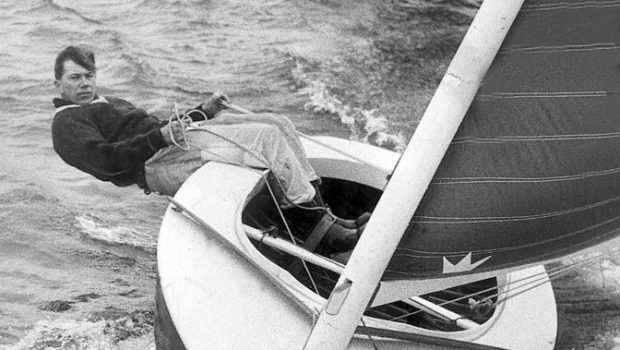Olympic Diaries: Paul Elvstrøm
Published on January 20th, 2020
In the Sports-Nova series Olympic Diaries, iconic achievers who have been among the acknowledged names in their respective sports have been profiled, including anecdotes of many a personality who have won and then returned to defend their titles – thus writing their own legacy to the highest pedestal of Olympic glory. Here Sugato Chakraborty explores the achievements of the legendary Danish sailor, Paul Elvstrøm.
Paul Elvstrøm was into sailing from his early childhood when he first learnt to oar a small dinghy. His international success too came fast, at the 1948 London Olympics when he was barely twenty. However, the path to his maiden coronation in the Firefly class was not very picture perfect, as the sailing legend could not finish his first race thus making no points.
The next four races hardly went according to plan as Elvstrøm was languishing at the eighth spot on the leader boards after first five rounds. His back-to-back victories in the final two races helped him pip the American yachtsman – Ralph Evans who instead came fifth in succession – for the gold, which he won by a relatively narrow margin.
The pioneer sailor, who would in future start a firm in developing sails and equipment, was benefitted from the scoring system where points from the best six races are added up in determining the winner from the cumulative scores.
While Elvstrøm left his first race incomplete, Evans came up a languishing 13th in the third round – both the scores did not account for in the final placements and discarded as their respective worst round. The final margin of 135 was way less than the 309 points that Evans won in his third race.
Later, the yachtsman would switch to the Finn class, which would help him clinch gold in the Helsinki games four years later by almost 3000 points. He would win four of the seven rounds with his worst being the fifth place finish in the second race.
The 13-time world champion would take pole position at the boards from the first race not to be dislodged from the top during the course. One of the pioneering sailing techniques that Paul Elvstrøm brought into the sports was to hike using toe-straps to channelize all the body weight up the knees to maintain the equilibrium inside the boat during stronger winds – thus ensuring the boat did not go slack. However, it was a technique that required a great deal of devotion and practice and the Danish sailor was equal to his task.
His hat-trick of gold was to be ascertained in Melbourne in 1956 when he would win five races in such domination that even an 8th place poor outing in between hardly mattered in him finishing at podium top by a good 1500 points. His innovations would suggest the installation of a kicking strap that would connect the lower portion of the mast with the boom close to the mast.
This would help in optimizing the sailor’s power and the speed of the boat thus assuring greater controllability. However, the seasoned sailor used to remove the strap before returning to the shores and hence it never went into notice of the investigators who checked the vessel before being revealed by the man himself.
The Danish sportsperson of the century would win his fourth Olympic title in the discipline of monotype sailing – that would later be emulated by Al Oerter in discus throw, Carl Lewis in long jump and swimmer Michael Phelps in 200 metre individual medley – at Rome where he would settle the matter even before the final race in another sound domination.
Apart from the game, his sailing firm Elvstrøm Sails would come up with many innovations – a self bailer and a life jacket equipped for professional sailing to name a few – that would remain relevant for a long time since their inception.
By courtesy of such gigantic victories worldwide, the talismanic sailor would achieve such fame that he would at times suffer from extreme anxiety. It was due to his fear of failure to maintain lofty standards from past events that he attended the 1964 Tokyo Games as an observer before suffering a nervous breakdown during the Munich Games eight years later.
Though he could not ultimately add to his kitty, he would come fourth twice – in the Star class in 1968 and sixteen years later in the Tornado class at Los Angeles with daughter Trine as part of the crew. The father-daughter duo would take part again in Seoul in which would be the swansong for the renowned yachtsman who is till date the only sailor to win world titles in seven different boat classes.
Apart from being one of the four Olympians to have won a particular event a record four times, the inaugural Sailing Hall of Fame inductee is also one from the rarest lot to have had an Olympic career spanning four decades.









 We’ll keep your information safe.
We’ll keep your information safe.